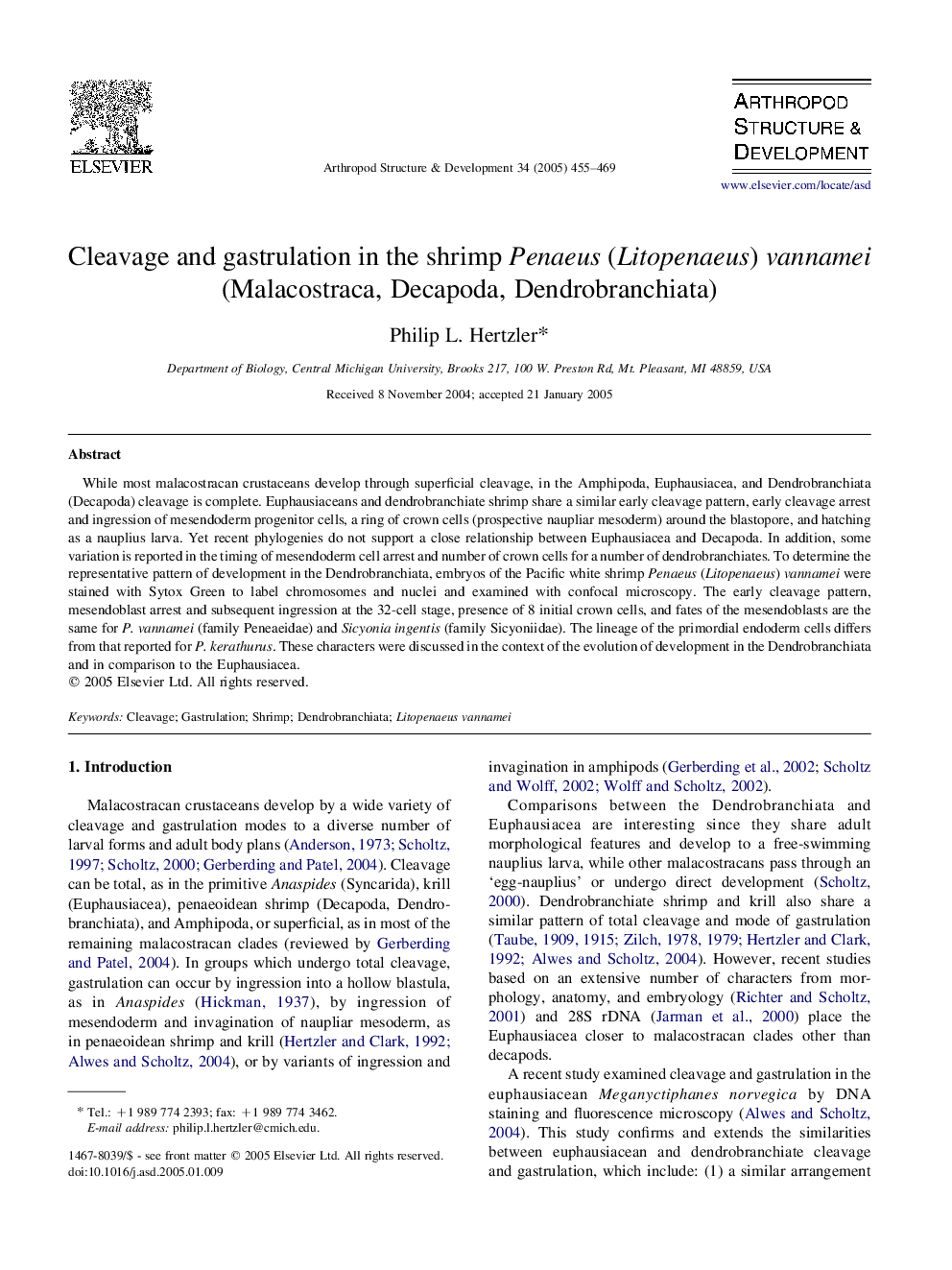| Article ID | Journal | Published Year | Pages | File Type |
|---|---|---|---|---|
| 9104152 | Arthropod Structure & Development | 2005 | 15 Pages |
Abstract
While most malacostracan crustaceans develop through superficial cleavage, in the Amphipoda, Euphausiacea, and Dendrobranchiata (Decapoda) cleavage is complete. Euphausiaceans and dendrobranchiate shrimp share a similar early cleavage pattern, early cleavage arrest and ingression of mesendoderm progenitor cells, a ring of crown cells (prospective naupliar mesoderm) around the blastopore, and hatching as a nauplius larva. Yet recent phylogenies do not support a close relationship between Euphausiacea and Decapoda. In addition, some variation is reported in the timing of mesendoderm cell arrest and number of crown cells for a number of dendrobranchiates. To determine the representative pattern of development in the Dendrobranchiata, embryos of the Pacific white shrimp Penaeus (Litopenaeus) vannamei were stained with Sytox Green to label chromosomes and nuclei and examined with confocal microscopy. The early cleavage pattern, mesendoblast arrest and subsequent ingression at the 32-cell stage, presence of 8 initial crown cells, and fates of the mesendoblasts are the same for P. vannamei (family Peneaeidae) and Sicyonia ingentis (family Sicyoniidae). The lineage of the primordial endoderm cells differs from that reported for P. kerathurus. These characters were discussed in the context of the evolution of development in the Dendrobranchiata and in comparison to the Euphausiacea.
Related Topics
Life Sciences
Agricultural and Biological Sciences
Insect Science
Authors
Philip L. Hertzler,
